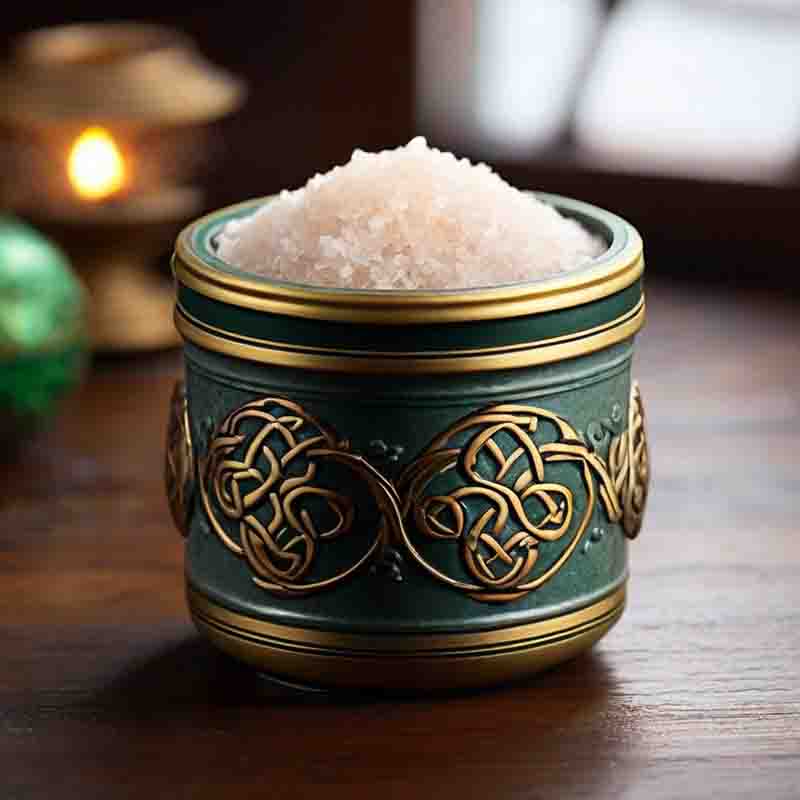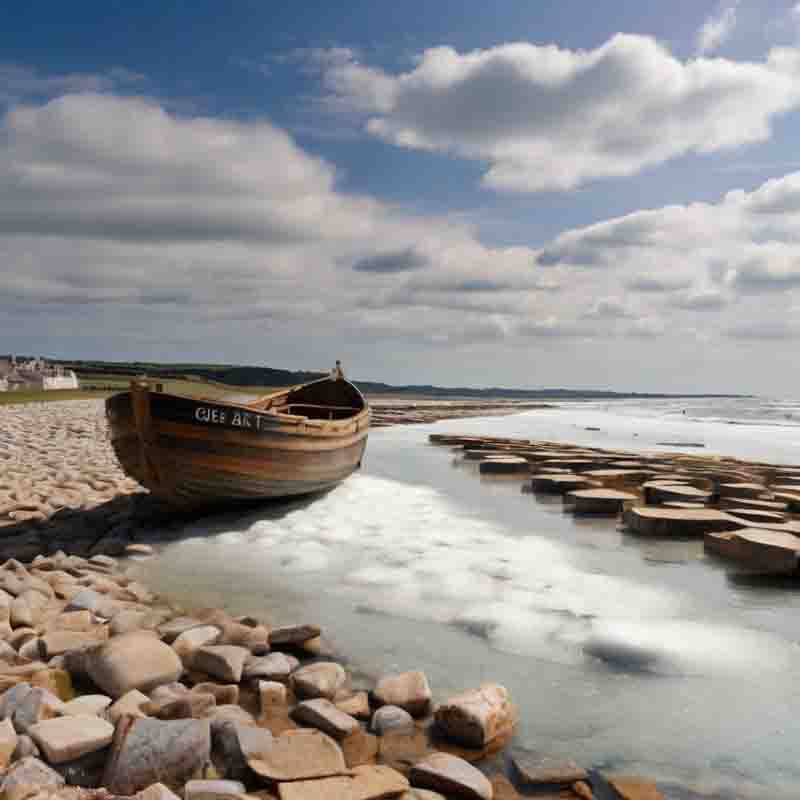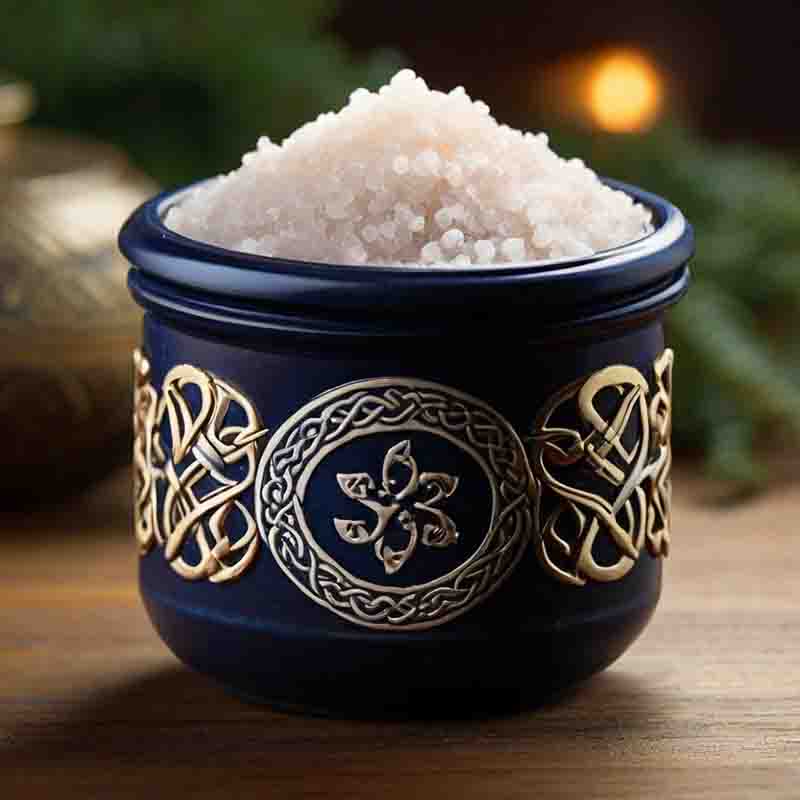Fuel Your Body with Nature's Best: Embrace Celtic Sea Salt
Celtic sea salt is a harmonious interplay of nature and human craftsmanship. Its rich mineral content, unmistakable flavour and traditional production methods appeal to those seeking a deeper connection with their food sources.

Celtic Sea Salt comes in various grain sizes, ranging from fine to coarse, catering to different culinary preferences and applications.
Celtic Sea Salt stands as a prime example of artisanal salt production, deriving its name from the coastal regions of Brittany, France, and other areas with Celtic culture where it is meticulously harvested.
What distinguishes Celtic Sea Salt is not just its origin, but its exceptional mineral content and unique production process.
Unlike commercially processed table salt, Celtic Sea Salt undergoes minimal refinement, allowing it to retain a rich array of essential minerals such as magnesium, potassium, and calcium.
The salt's journey begins with the evaporation of seawater under natural sunlight and wind, a process that occurs over a span of several months.
This slow evaporation in carefully maintained salt ponds ensures that the mineral-rich brine is concentrated, resulting in salt crystals with a distinctive gray hue.
Celtic Sea Salt boasts a unique composition rich in essential minerals like magnesium, potassium, and calcium. Culinary enthusiasts appreciate its nuanced flavor and texture, making it a popular choice in gourmet cooking.
10 Important Facts to Know About Celtic Sea Salt
From a culinary perspective, Celtic Sea Salt is prized by chefs and home cooks alike for its nuanced taste and texture.
Its coarse, irregular crystals lend a delightful crunch and a subtle briny flavor to dishes, enhancing everything from simple salads to gourmet creations.
The presence of minerals adds depth and complexity to the salt's flavor profile, making it a versatile ingredient in both savory and sweet applications.
-
Origin: Celtic Sea Salt is harvested from coastal regions, primarily in Brittany, France, known for its Celtic heritage and pristine seawater.
-
Unrefined: Unlike table salt, Celtic Sea Salt is minimally processed, retaining its natural mineral content and trace elements.
-
Mineral-Rich: Celtic Sea Salt contains a diverse array of essential minerals, including magnesium, potassium, and calcium, which are beneficial for health.
-
Hand-Harvested: Traditionally, Celtic Sea Salt is harvested by hand using age-old methods, preserving its purity and quality.
-
Distinct Flavor: Celtic Sea Salt has a unique flavor profile characterized by subtle brininess and earthiness, enhancing the taste of dishes.
-
Various Grain Sizes: It is available in different grain sizes, from fine to coarse, making it versatile for various culinary applications.
-
Gray hue: Refers to the distinctive color of Celtic Sea Salt, which is a result of its mineral content and unrefined nature.
-
Culinary Uses: Chefs and home cooks use Celtic Sea Salt in a wide range of dishes, from savory to sweet, to add flavor and texture.
-
Natural Production: Celtic Sea Salt is produced through natural evaporation of seawater under sunlight and wind, without the use of additives or processing aids.
-
Sustainable: Many producers of Celtic Sea Salt prioritize sustainable harvesting practices to minimize environmental impact and preserve coastal ecosystems.
Celtic Sea Salt: Timeline
The history of Celtic Sea Salt is deeply rooted in ancient traditions and coastal civilizations.
Dating back thousands of years the Celts recognized the value of harvesting salt from the sea.
| Year | Milestone |
|---|---|
| 8000 BCE | Early evidence of salt harvesting by ancient civilizations around coastal areas. |
| 1500 BCE | Celts in Europe are believed to have started harvesting sea salt along coastal regions. |
| 600 BCE | Celtic tribes refine salt extraction techniques, developing methods that influence future practices. |
| 200 BCE | Roman Empire expands salt production methods, utilizing evaporative techniques similar to those used by the Celts. |
| 9th Century | Celtic monks in Brittany, France, begin harvesting sea salt using traditional methods. |
| 17th Century | Brittany becomes a major center for sea salt production, with salt marshes covering extensive areas along the coast. |
| 19th Century | Industrialization leads to changes in salt production methods, with some traditional techniques giving way to more modern processes. |
| 20th Century | Interest in traditional and artisanal food practices leads to a revival of Celtic Sea Salt production in Brittany and other Celtic regions. |
| 1976 | Jacques Le Bris founds the company 'Celtic Sea Salt' in Guérande, France, to market traditional Celtic sea salt internationally. |
| 1980s | Celtic Sea Salt gains popularity in wellness circles due to its mineral-rich composition and unrefined nature. |
| 1990s | Increased awareness of the benefits of Celtic Sea Salt leads to expanded distribution and availability in gourmet food stores worldwide. |
| Present Day | Celtic Sea Salt continues to be valued for its purity, mineral content, and traditional production methods, remaining a staple in kitchens globally. |
This timeline outlines the key events in the history of Celtic Sea Salt, from its ancient origins to its present-day popularity as a premium culinary ingredient and wellness product.
Wellness Routine: Try Celtic Sea Salt

Unlike table salt, Celtic Sea Salt undergoes minimal processing, preserving its natural mineral content and trace elements.
The Power of Pure: Celtic Sea Salt
Unlike conventional table salt, Celtic Sea Salt is harvested using traditional methods that date back centuries.
These methods involve evaporating seawater in shallow pools, allowing the salt crystals to form naturally.
This process results in a salt that retains its natural mineral content, including trace elements like magnesium, potassium, and calcium.
Celtic Sea Salt is known for its coarse texture and slightly greyish hue, which is a result of the minerals it contains.
Culinary Uses of Celtic Sea Salt
Celtic Sea Salt is prized for its versatility in the kitchen and is used in a variety of culinary applications.
Unlike table salt, which is heavily processed and stripped of its natural minerals, Celtic Sea Salt retains its mineral content and flavor profile.
This makes it ideal for seasoning dishes and adding depth of flavor to recipes.
Celtic Sea Salt can be used in cooking, baking, and as a finishing salt to enhance the taste of both savory and sweet dishes.
Its coarse texture also makes it suitable for grinding and using as a seasoning rub for meats and vegetables.
Additionally, Celtic Sea Salt can be used to make brines and marinades, infusing foods with its unique mineral-rich flavor.
Environmental Sustainability and Ethics
When choosing Celtic Sea Salt, it's important to consider the environmental and ethical implications of salt production.
Traditional methods of harvesting Celtic Sea Salt involve evaporating seawater in shallow pools, which can be labor-intensive and time-consuming.
However, these methods are generally sustainable and have minimal impact on the surrounding ecosystem.
In contrast, industrial salt production methods, such as salt mining and evaporation ponds, can have significant environmental consequences, including habitat destruction and pollution.
By supporting producers who use traditional methods of salt harvesting, consumers can make more environmentally conscious choices and contribute to sustainable salt production practices.
Make the Switch to Celtic Sea Salt

Unlike refined table salt, Celtic Sea Salt retains a range of trace minerals, including calcium, magnesium, and potassium, adding a subtle depth to any dish.
Celtic sea salt, also known as sel gris (French for "grey salt"), is a sought-after ingredient that is appreciated by professional chefs and amateur cooks alike.
Whether used as a finishing touch or incorporated during cooking, Celtic Sea Salt elevates your meals with a taste of the ancient Celtic tradition.
-
Celtic Sea Salt Crystals: Celtic Sea Salt crystals are known for their unique texture and flavor. Unlike finely ground table salt, these coarse, moist crystals add a delightful crunch and a burst of salty intensity to food.
-
Celtic Sea Salt Flavors: While Celtic Sea Salt offers a pure, unadulterated flavor on its own, the company itself doesn't actually produce flavored varieties. They focus on the inherent taste and texture of their sea salt crystals.
-
Celtic Sea Salt Gourmet Appeal: The coarse texture and light grey hue of Celtic Sea Salt crystals add a touch of sophistication to dishes. This aligns with a growing interest in gourmet ingredients and restaurant-quality cooking at home.
Traditionally, Celtic Sea Salt is collected by hand using ancient methods, maintaining its purity and quality
From Sea to Plate: Experience Celtic Sea Salt

From enhancing the natural sweetness of vegetables to drawing out the savory notes in meats, Celtic Sea Salt becomes a partner in the kitchen, transforming everyday meals into unforgettable experiences.
Celtic Sea Salt is a type of unrefined sea salt that originates from the coastal regions like Brittany, France.
Unlike conventional table salt, Celtic Sea Salt is harvested using traditional methods that date back centuries.
Celtic Sea Salt: FAQ
Are you curious about music, art, technology, fashion, lifestyle, and beer?
If so, then you need to subscribe to the free Likewolf newsletter.
100% privacy. When you sign up, we'll keep you posted.
Wheel of the Year
Solstices and Equinoxes
